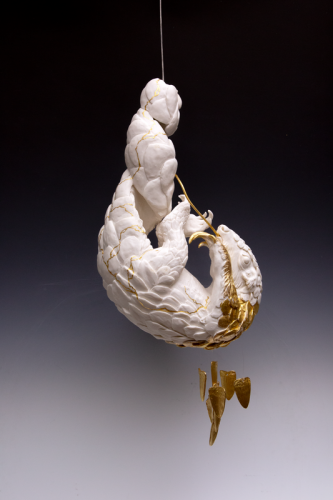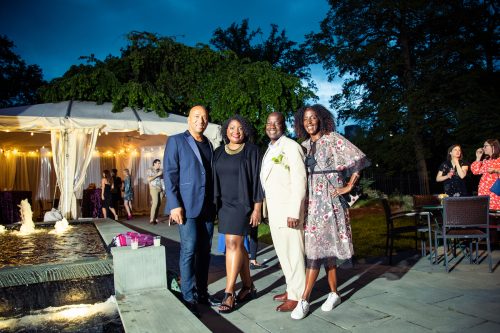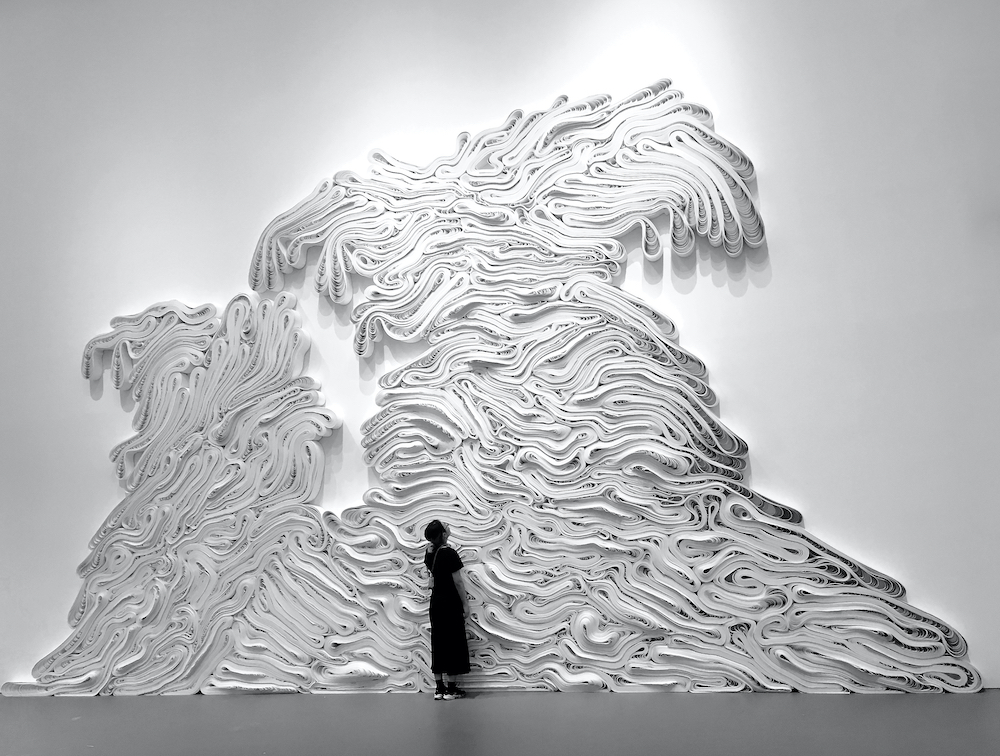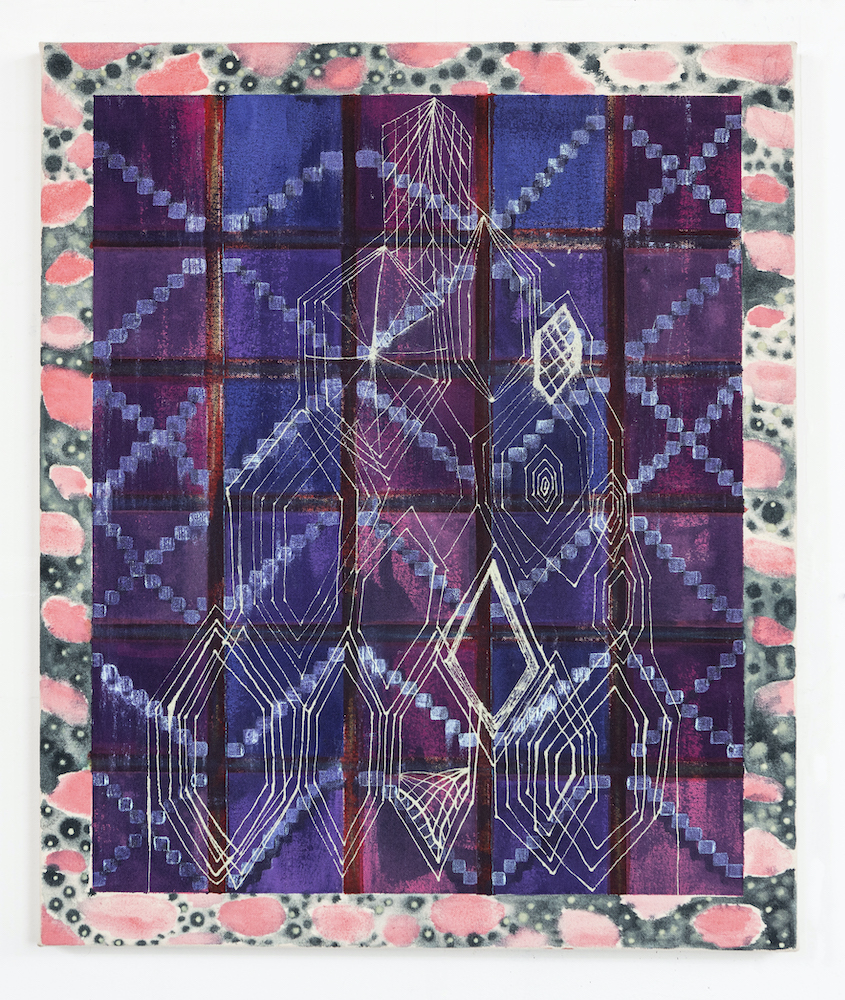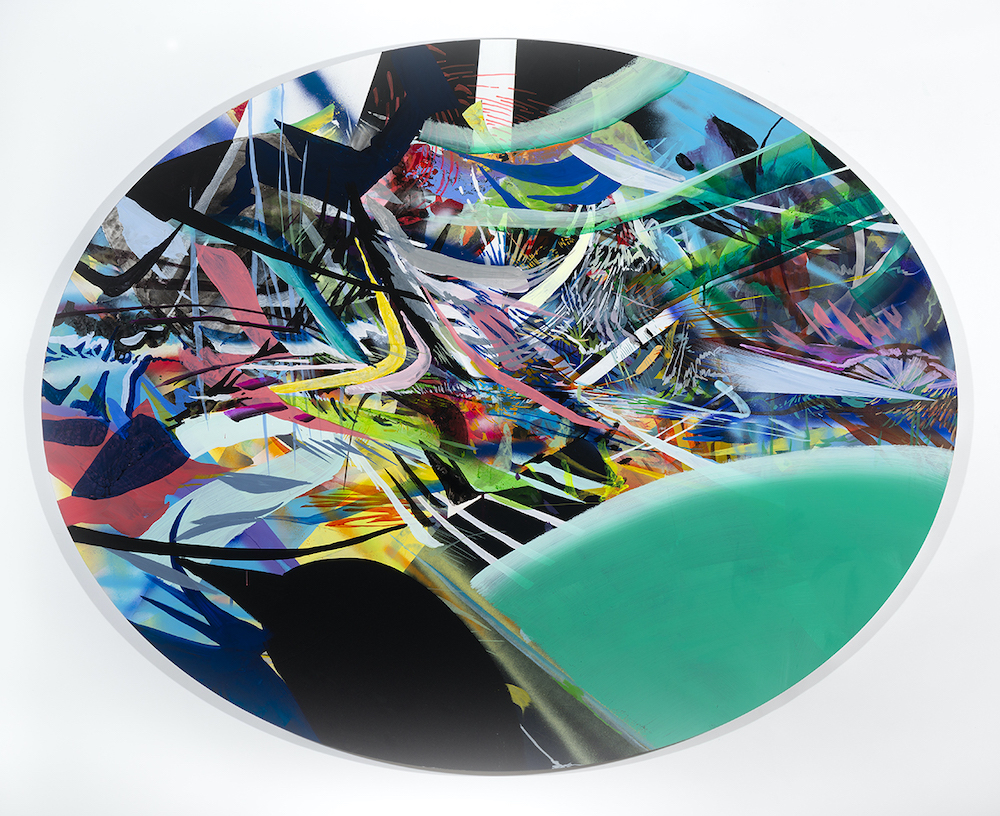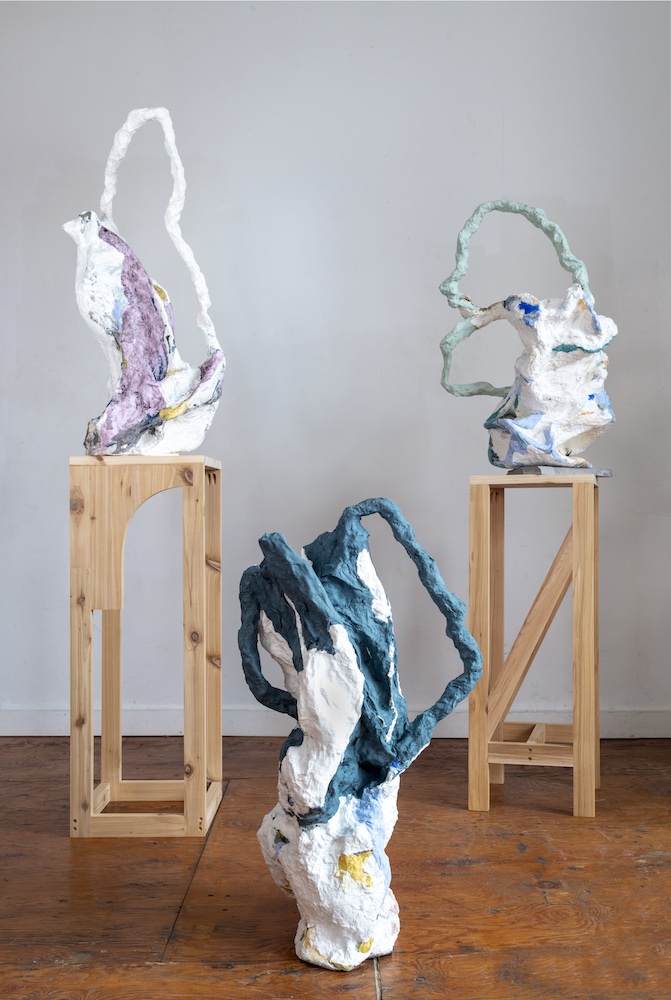Maren Hassinger draws the viewer back into a physical, verbal reality. Her striking sculpture Wrenching News confronts the power of the media, reshaping ripped and twisted New York Times pages into two loud, thick circles, one on the wall and another on the floor. Twisted into stems and wrapped into bouquets, these papers vibrate with indecipherable noise, creating an emotional memorial out of questionably objective reporting.
While Hassinger’s work questions the constructions of narrative within our world, another set of works by Goldberg imagines entirely new spaces to inhabit. Created in pointillist fashion, two ink drawings from 1978 create unfamiliar, map-like compositions. Titled Hyacinthetical Nebulae and Narsynthetical Nebulae, both drawings feature round target shapes that evoke danger or battle and resemble war maps. To the left, the shimmer of a more recent piece, NT 16 (2011) catches the light. A dark, galactic void calls me in, yet a celebratory glitter and energetic pours of acrylic paint release the tension.
Contrasting with paintings that tower over the viewer, the notebook-sized drawings of linn meyers pull you in with a different scale of intrigue. On graph paper, meyers creates waves of ink that could be topographical maps or wrinkles of fabric. With numbers and hole punches in the paper, the pieces give numerical definitions to imagined, intimate spaces, suggesting that human emotion can feel regulated by impossible limits. Another series features pages cut from a 1900 book that compiles the art critic John Ruskin’s writings on the landscape painter J.M.W. Turner. The referenced literary work illustrates how the words of a critic can shape the perception of an artist’s work. Through excision, meyers eliminates most of the text on each page to leave specific poetic messages behind, such as the greatest of all feelings – an utter forgetfulness of self. Creating gaping geometric holes, meyers removes all but a few words of this male critic, leaving behind single phrases that concentrate on sublime, emotional dimensions.
Large, striking paintings by Maggie Michael command the nearby wall. Vigorous strokes, pours, and splashes of paint combine with materials such as soil, stone, and ground metal in Wind, Water, Stone (Paz meets Lispector on a cliff), evoking labor, strength, attack, and disaster.
Arden Bendler Browning presents her three-step process of creating work as three separate displays. Inspired by both her travels and studio, she creates her first pieces as colorful collages of watercolor, ink, spray paint, and paper on board. Browning then transforms these mountainous and at times unidentifiable shapes into virtual reality spaces. Next to her collages in the gallery, visitors can put on a VR headset and walk through the invented realms. Soft yet vivid strokes of paint build a valley of safety as I step beneath and on top of the artist’s work. Removing the headset, I see Browning’s final step: a wide, oval-shaped canvas titled VR painting. With a combination of acrylic, gouache, and flashe paint, Browning reveals the growth of her process; layers of lively brushstrokes, varying in thickness and opacity, create a dense, exciting final destination.
